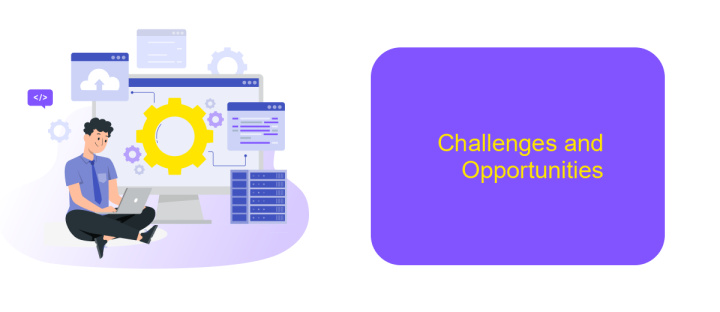Energy and Analytics: Big Data and Building Technology Integration
In an era where sustainability and efficiency are paramount, the integration of big data and building technology is revolutionizing the energy sector. By leveraging advanced analytics, modern buildings can optimize energy consumption, reduce costs, and enhance occupant comfort. This article explores the transformative impact of big data on energy management and the innovative technologies driving this change.
Introduction
The integration of big data and building technology is revolutionizing the energy sector. As buildings become smarter and more connected, the ability to collect, analyze, and act on vast amounts of data is transforming how energy is managed and consumed. This synergy between big data and building technology not only enhances energy efficiency but also contributes to sustainability and cost savings.
- Enhanced energy efficiency through real-time monitoring and control
- Predictive maintenance to reduce downtime and operational costs
- Optimized energy consumption patterns based on data analytics
- Improved occupant comfort and productivity
- Contribution to sustainability goals through reduced energy waste
As we delve deeper into the intersection of big data and building technology, it is crucial to understand the potential benefits and challenges. By leveraging advanced analytics and innovative technologies, stakeholders can create smarter, more efficient buildings that align with modern energy demands and environmental considerations.
Big Data in Energy and Building Technology

Big Data is revolutionizing the energy sector and building technology by enabling more efficient and sustainable practices. In the realm of energy, Big Data analytics can predict energy consumption patterns, optimize resource allocation, and reduce operational costs. By analyzing vast amounts of data from smart meters, sensors, and other IoT devices, energy providers can gain insights into usage trends, identify inefficiencies, and implement predictive maintenance to prevent failures. This leads to enhanced reliability and a significant reduction in energy waste.
In building technology, Big Data facilitates the integration of various systems such as HVAC, lighting, and security, creating smarter and more responsive environments. Platforms like ApiX-Drive play a crucial role in this integration by automating data exchange between disparate systems, ensuring seamless communication and real-time analytics. This automation not only improves operational efficiency but also enhances occupant comfort and reduces energy consumption. By leveraging Big Data, building managers can make informed decisions, optimize building performance, and contribute to a more sustainable future.
Benefits of Data Analytics in Building Management

Implementing data analytics in building management offers significant advantages. By leveraging big data, facility managers can optimize energy consumption, improve operational efficiency, and enhance occupant comfort. The integration of advanced analytics tools allows for real-time monitoring and predictive maintenance, reducing downtime and operational costs.
- Energy Efficiency: Data analytics helps identify patterns and anomalies in energy usage, enabling targeted interventions to reduce waste.
- Cost Savings: Predictive analytics can forecast equipment failures, allowing for timely maintenance and avoiding expensive emergency repairs.
- Enhanced Comfort: Analyzing occupancy data ensures optimal climate control, improving the comfort and productivity of building occupants.
- Sustainability: Data-driven insights support sustainable practices by minimizing resource consumption and reducing the building's carbon footprint.
- Improved Decision-Making: Access to comprehensive data empowers facility managers to make informed decisions, enhancing overall building performance.
Overall, integrating data analytics into building management systems transforms how facilities are maintained and operated. It not only leads to significant cost savings and energy efficiency but also contributes to a more sustainable and comfortable environment for occupants. The future of building management lies in harnessing the power of big data and advanced analytics.
Challenges and Opportunities

Integrating big data and building technology presents a range of challenges and opportunities. One of the primary challenges is the complexity of data management. With the vast amounts of data generated by modern building systems, ensuring data accuracy and consistency becomes a significant hurdle. Additionally, there are concerns related to data privacy and security, as sensitive information must be protected from unauthorized access.
Another challenge is the interoperability of various technologies. Different systems and devices often use disparate protocols and standards, making seamless integration difficult. This lack of standardization can lead to inefficiencies and increased costs in both implementation and maintenance.
- Improved energy efficiency through real-time analytics.
- Enhanced occupant comfort and productivity.
- Cost savings from optimized building operations.
- Better decision-making with predictive maintenance.
Despite these challenges, the integration of big data and building technology holds immense potential. By leveraging advanced analytics and machine learning, building managers can gain valuable insights into energy consumption patterns and identify opportunities for optimization. This not only leads to significant cost savings but also contributes to sustainability efforts by reducing the overall carbon footprint of buildings.
Conclusion
In conclusion, the integration of big data and building technology has the potential to revolutionize energy management. By leveraging advanced analytics, organizations can optimize energy consumption, reduce costs, and enhance overall building performance. The synergy between data-driven insights and smart building systems enables more efficient and sustainable operations.
Moreover, services like ApiX-Drive facilitate seamless integration of various data sources and building technologies, streamlining the process of data collection and analysis. This integration not only simplifies management but also empowers stakeholders with real-time information, leading to informed decision-making and proactive energy strategies. As the landscape of building technology continues to evolve, the role of big data and integration services will remain pivotal in shaping the future of energy efficiency and sustainability.
FAQ
What is the importance of integrating big data analytics with building technology?
How can big data analytics improve energy efficiency in buildings?
What types of data are typically collected for building technology analytics?
How can automation tools assist in the integration of big data and building technology?
What are some challenges faced when integrating big data with building technology?
Apix-Drive is a simple and efficient system connector that will help you automate routine tasks and optimize business processes. You can save time and money, direct these resources to more important purposes. Test ApiX-Drive and make sure that this tool will relieve your employees and after 5 minutes of settings your business will start working faster.

